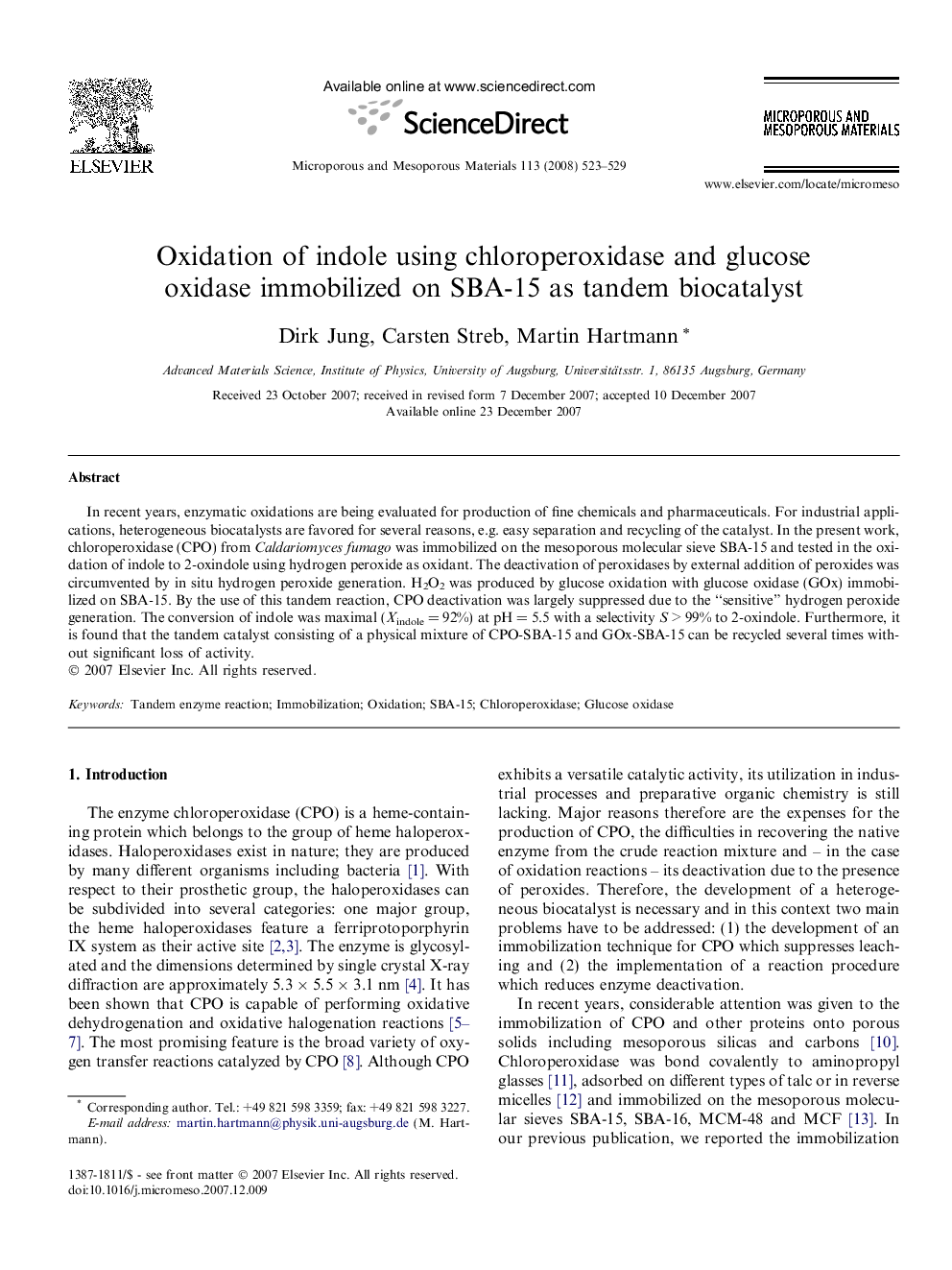| Article ID | Journal | Published Year | Pages | File Type |
|---|---|---|---|---|
| 76705 | Microporous and Mesoporous Materials | 2008 | 7 Pages |
In recent years, enzymatic oxidations are being evaluated for production of fine chemicals and pharmaceuticals. For industrial applications, heterogeneous biocatalysts are favored for several reasons, e.g. easy separation and recycling of the catalyst. In the present work, chloroperoxidase (CPO) from Caldariomyces fumago was immobilized on the mesoporous molecular sieve SBA-15 and tested in the oxidation of indole to 2-oxindole using hydrogen peroxide as oxidant. The deactivation of peroxidases by external addition of peroxides was circumvented by in situ hydrogen peroxide generation. H2O2 was produced by glucose oxidation with glucose oxidase (GOx) immobilized on SBA-15. By the use of this tandem reaction, CPO deactivation was largely suppressed due to the “sensitive” hydrogen peroxide generation. The conversion of indole was maximal (Xindole = 92%) at pH = 5.5 with a selectivity S > 99% to 2-oxindole. Furthermore, it is found that the tandem catalyst consisting of a physical mixture of CPO-SBA-15 and GOx-SBA-15 can be recycled several times without significant loss of activity.
